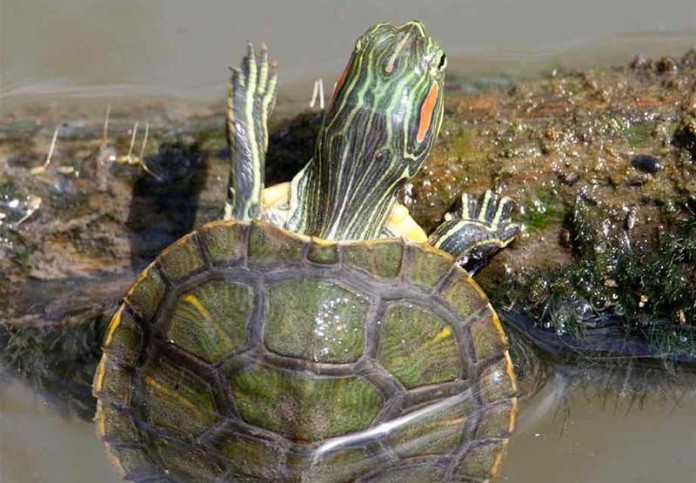A red eared slider pond can be a very attractive addition to any backyard or garden area. It’s simply breathtaking to have a little community of animals living in your backyard like a microcosm of a natural biome. Before you jump headlong into this venture, however, there are a few things to consider.
First, do you already have fish in your pond? Sliders are omnivores, meaning that they will eat anything they can catch. If you have fish smaller than your slider, it will eat them if it strikes its fancy and if it can catch them. Even fish larger than the slider may be nibbled on, which isn’t a good scenario if you have koi costing upwards of $100 swimming around in your pond! The best option in this scenario is to have an already established population of large koi in the pond and introduce a small, 4-6 inch slider into the mix. This way, the slider will grow up amongst the large fish and he will be less inclined to look upon them as a food source.
Another thing to consider are the predators in your area. Red eared sliders naturally have many predators, but the ones you most have to worry about in a backyard pond situation are herons (and other wading birds), raccoons, skunks, and crows. Sliders serve as a tasty treat for all these predators, and they will go to any length to get at them. You will have to put a fence around your pond to keep your turtles inside, but this may not be enough of a deterrent. The birds will fly over it, and the raccoons will climb over it. So before you put your pet slider turtles in your pond, think about the animals in your area and if they will likely be patrolling your pond for food. If you think predation may be a problem, you can either place a mesh top over the fence or put some sort of cover over the pond at night, since most of these predators will be active at night or very early in the morning. Just make sure that you take this cover off during the day to let sunlight in.
The last thing to consider is the damage that red eared sliders can wreak on your pond liner. If you have a simple plastic liner, your slider may damage it by digging at the bottom or sides. Some liners are thick enough to withstand this wear and tear, but some aren’t. If your slider tears a hole in your liner, it’s a definite pain in the neck to repair or, even worse, replace. One way to get around this is to use a heavy-duty prefab pond sunk into the ground.











